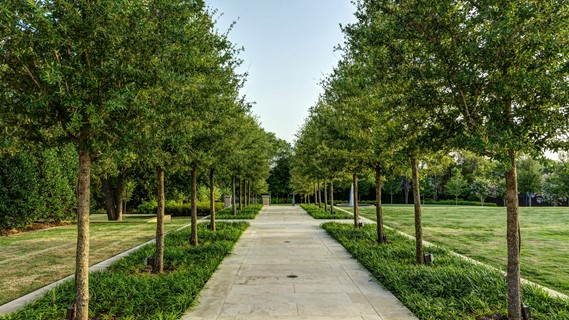Hilton Head Landscapes Things To Know Before You Buy
Hilton Head Landscapes Things To Know Before You Buy
Blog Article
All about Hilton Head Landscapes
Table of ContentsHow Hilton Head Landscapes can Save You Time, Stress, and Money.Some Ideas on Hilton Head Landscapes You Need To KnowHilton Head Landscapes Can Be Fun For EveryoneHilton Head Landscapes Things To Know Before You BuyFacts About Hilton Head Landscapes RevealedFacts About Hilton Head Landscapes RevealedSome Known Questions About Hilton Head Landscapes.
Line produces all types and patterns and can be made use of in a selection of ways in the landscape. Line in the landscape is developed by the edge in between two products, the rundown or silhouette of a type, or a lengthy direct attribute. Lines are a powerful device for the developer since they can be made use of to create an infinite range of forms and forms, and they regulate movement of the eye and the body.

Lines can have several characteristics, such as those explained below, yet they usually offer different functions. Number 1. Lines in the landscape - hilton head landscapers. The properties of lines figure out exactly how individuals reply to the landscape, both mentally and physically. Straight lines are structural and powerful; they develop an official character, are normally related to a symmetrical style, and lead the eye straight to a focal point.
Everything about Hilton Head Landscapes
Rounded lines produce an informal, natural, relaxed character that is associated more with nature and unbalanced equilibrium. Curved lines relocate the eye at a slower speed and add mystery to the room by developing concealed sights.
Vertical lines in the landscape consist of high, narrow plant product, such as trees, or high structures, such as an arbor or a bird home on a pole. Straight lines relocate the eye along the ground plane and can make a room feel bigger. Reduced lines are extra controlled and create a sensation of rest or repose.
What Does Hilton Head Landscapes Do?
Reduced lines are created by low yard walls, sidewalks, and short hedges. Lines are made use of to draw kinds on a strategy. In plan view, they specify plant beds and hardscape locations. Lines are also produced by the upright forms of developed attributes and plant material. There are 3 primary line kinds that create form in the landscape: bedlines, hardscape lines, and plant lines.
Bedlines attach plant material to your house and hardscape due to the fact that the eye complies with the line, relocating the stare through the landscape. Hardscape lines are produced by the side of the hardscape, which marks the constructed structure. Line can also be produced by lengthy and slim products, such as a fence or wall.
All about Hilton Head Landscapes
Kind is located in both hardscape and plants, and it is usually the dominant visual element that spatially organizes the landscape and frequently identifies the style of the garden. The form of frameworks, plant beds, and yard ornaments also determines the overall form motif of the yard. Formal, geometric types include circles, squares, and polygons.
Plants produce type in the garden through their describes or silhouettes, however type can additionally be specified by her latest blog a space or negative area between plants - landscapers hilton head island (https://www.openlearning.com/u/stevengonzales-sg0o4h/). Circles can be full circles, or they can be separated into half circles or circle segments and incorporated with lines to produce arcs and tangents
The smart Trick of Hilton Head Landscapes That Nobody is Talking About
Circles are a solid design type since the eye is constantly drawn to the center, which can be utilized to stress a focal point or connect various other kinds. Round forms in hardscape and yard panels.
The square kind can additionally be segmented and secondhand consistently to produce a grid pattern. Unlike circles, squares are more powerful on the brink, which can be aligned or overlapped to develop unique patterns and even more complex forms. Polygons are many-sided types with straight sides. Triangulars, as an example, are three-sided polygons.
Twisting lines frequently simulate the all-natural training course of rivers or streams and can be referred to as smooth lines with deeply curved undulations. Meandering lines (Figure 3) work well for pathways, plant bedlines, and dry stream beds. Meandering lines can add interest and mystery to a garden by leading audiences around corners to uncover brand-new sights and areas.
A Biased View of Hilton Head Landscapes

Typical plant forms are well developed and standardized, as form is the most regular and recognizable characteristic of plants. Type can also be developed with the massing of plants, where the overall mass develops a different type than an individual plant.
A highly contrasting form should be used with careone or 2 work well as a focal factor, but way too many wreak havoc. All-natural plant forms, instead of over-trimmed kinds, ought to develop the bulk of the structure. The relevance of total form is essentially depending on the seeing perspectivethe kind of a tree can appear rather various to a person standing under the cover versus viewing the tree from a range in an open field.
Top Guidelines Of Hilton Head Landscapes
Plant forms also produce and specify deep space or open rooms in between the plants, producing either convex or concave types in deep spaces. High-arching tree branches usually produce a concave open area under the branches, and a rounded canopy with low branches fills up the space to create a convex form in the open space under the tree.

Report this page